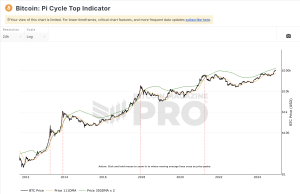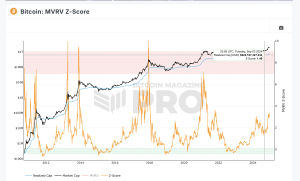Understanding Bitcoin ETFs: A Beginner’s Guide

Bitcoin ETFs are a bridge between traditional investing and the digital currency world, allowing people to put money into Bitcoin without actually owning it. These funds are available on well-known stock exchanges, like the New York Stock Exchange, making it simpler for regular investors to get involved with Bitcoin.
Since the attempt to launch the first Bitcoin ETF by the Winklevoss twins in 2014, the idea has evolved. Now, we have Bitcoin Futures ETFs on the market, and there’s a buzz around the anticipated arrival of spot Bitcoin ETFs, which would let investors directly invest in Bitcoin through these funds.
What is a Bitcoin ETF?
A Bitcoin ETF is a fund that you can buy shares in, just like you would with stocks. This fund has a stash of Bitcoin, and by buying shares, you’re getting a piece of that stash without needing to deal with the Bitcoin itself. It’s a way to invest in Bitcoin’s price movements without the hassle of securing and managing the cryptocurrency. Currently, the U.S. Securities and Exchange Commission (SEC) has approved Bitcoin ETFs that deal with futures contracts but is yet to give the green light to those holding actual Bitcoin.
How Bitcoin ETFs Function
Think of Bitcoin ETFs like your regular exchange-traded funds. An asset management company buys Bitcoin and keeps it safe. Then, they sell shares of this fund to investors, giving them a slice of the action. If lots of people want to buy in, the company creates more shares, and if people sell their shares, those shares are taken out of circulation. This keeps the number of shares in line with how much Bitcoin the fund holds.
The price of your shares moves up and down with Bitcoin’s price. There are special traders who make sure the price of the ETF stays close to the actual Bitcoin price by buying or selling shares as needed.
Some Bitcoin ETF Options
While we wait for spot Bitcoin ETFs, you can already dive into futures-based ones. Here are three big players:
- ProShares Bitcoin Strategy ETF (BITO): The heavyweight champion, with over $1 billion under management. It tracks Bitcoin futures and offers daily exposure to Bitcoin’s price changes.
- VanEck Bitcoin Strategy ETF (XBTF): Another active player, managing around $45 million. It follows a set of rules for investing in Bitcoin futures.
- Valkyrie Bitcoin Strategy ETF (BTF): With about $30 million managed, this fund also focuses on Bitcoin futures, aiming to mirror Bitcoin’s price movements.
Spot vs. Futures Bitcoin ETFs
The main difference between these two types of ETFs is what they invest in. A Bitcoin Futures ETF bets on what Bitcoin’s price will be in the future, while a spot Bitcoin ETF would directly invest in Bitcoin itself. Owning a piece of a spot Bitcoin ETF means you’re indirectly owning real Bitcoin.
Why Spot Bitcoin ETFs Are a Big Deal
A spot Bitcoin ETF could change the game by making Bitcoin investment straightforward and accessible to more people, including big institutional investors who’ve been wary of diving into cryptocurrencies. It would also signal a level of maturity and acceptance of Bitcoin, potentially leading to more stable and regulated investment opportunities in the crypto world.
Bitcoin ETFs are an exciting development, bridging the gap between traditional finance and the burgeoning world of cryptocurrency, offering a familiar and regulated path for investors looking to explore Bitcoin’s potential.



